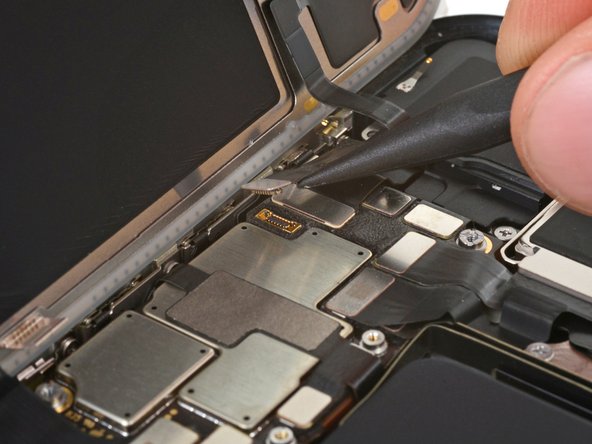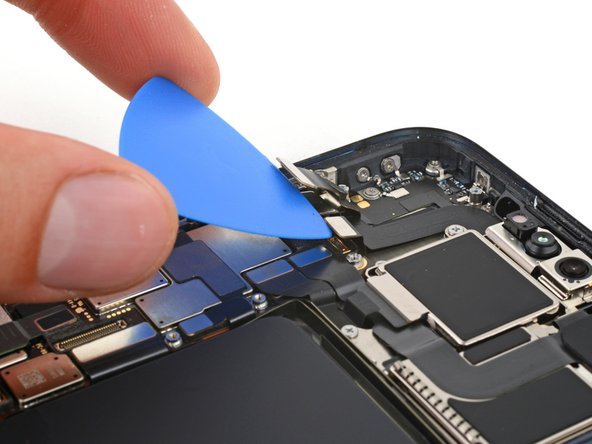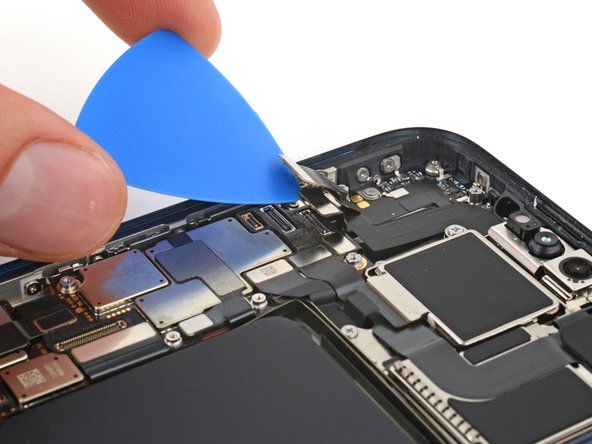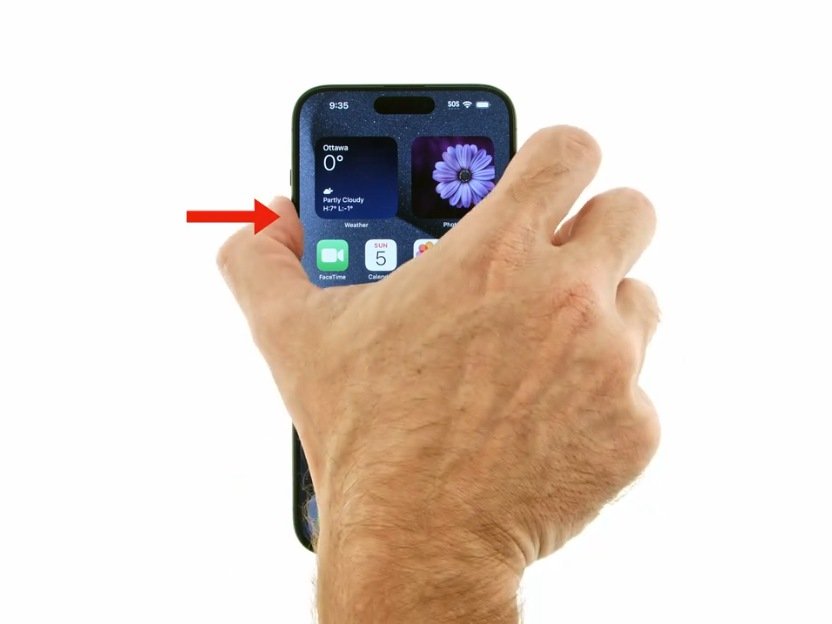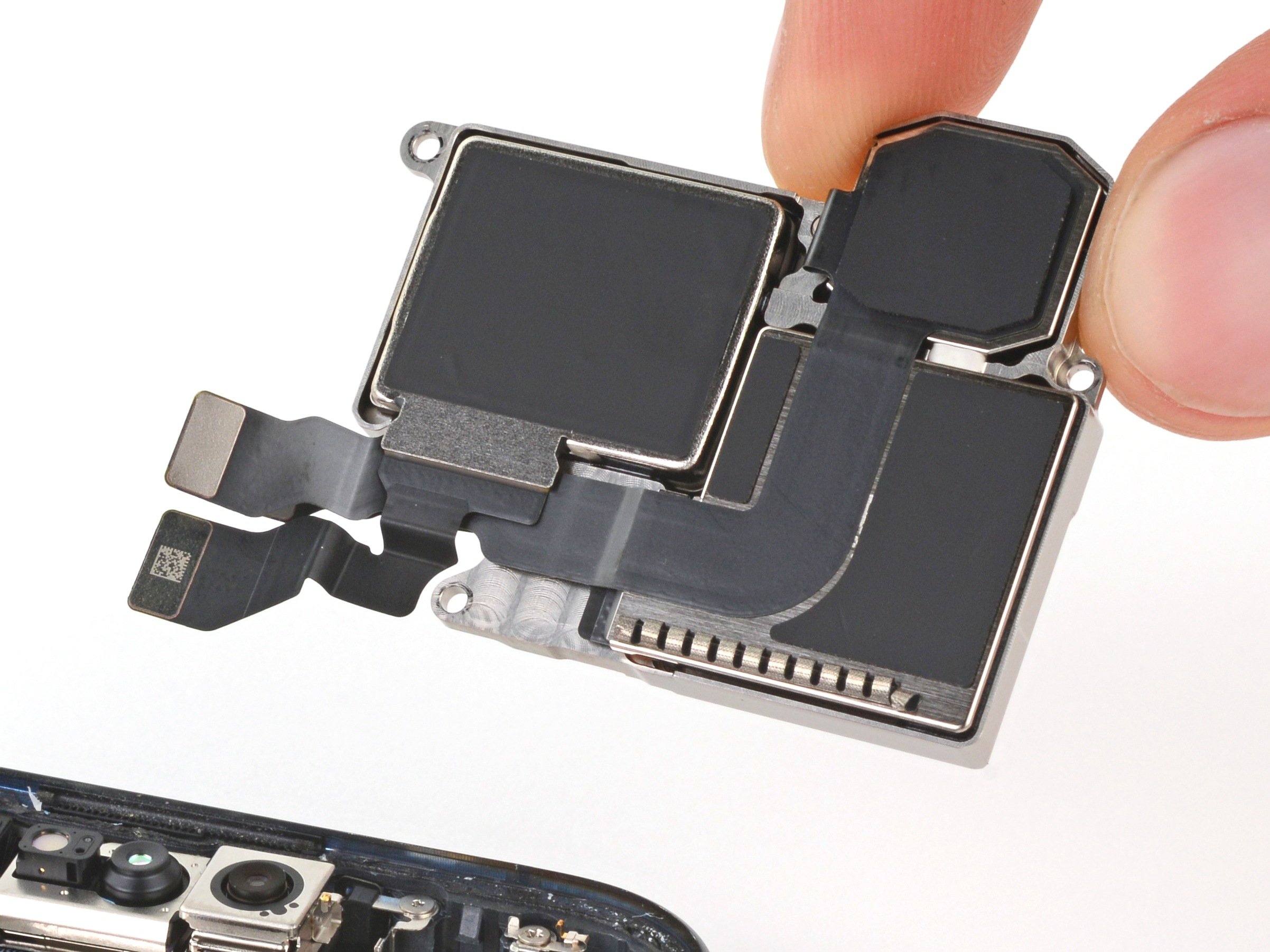iPhone 15 Pro Max Front Camera Assembly Replacement
Duration: 45 minutes
Steps: 27 Steps
Face ID won't be available after this step, so get ready to rock a passcode!
Ready to give your iPhone 15 Pro Max a fresh selfie cam? If your front camera is looking blurry or isn’t working at all, along with that pesky Face ID failure, it might be time for a replacement. This guide will walk you through swapping out the front camera assembly, which includes both the camera and Face ID sensors (they’re paired specifically to your logic board, so no shortcuts there!). Heads up: swapping this part means Face ID won’t work anymore. On iOS 17.6 and earlier, only Apple or an authorized technician can get Face ID back up. If you’re on iOS 18 or later, you can recalibrate the new camera yourself with Apple’s Repair Assistant. Just don’t forget—you’ll need some replacement screen adhesive to seal the deal. Let’s get started!
Step 1
Let your phone’s battery dip below 25%. A fully charged lithium-ion battery can be a little too spicy for safety, so let it rest for now.
- Disconnect all cables from your phone before getting started.
- Press and hold the power button along with either volume button, then swipe to turn off your phone.
Step 2
Find a nice, smooth spot near the bottom edge where a suction cup can make a solid grip. You want enough space to let it stick properly.
- If your screen or back glass is looking a bit worse for wear with some serious cracks, don’t fret! Just grab some packing tape and lay down a few overlapping strips over the glass. This will keep you safe and make the disassembly process a whole lot smoother. You've got this!
Step 3
Pushing your opening pick in too deep can cause trouble for your device. Mark your pick to keep things safe and sound.
Feel free to mark the other corners of your pick with different measurements for extra control.
Another trick: tape a coin to the pick about 3 mm from the tip to help manage the depth.
- Grab your opening pick, measure out a cool 3 mm from the pointy end, and mark it with a permanent marker—like a pro prepping for precision.
Step 4
- Grab your P2 pentalobe driver and unscrew the two 7.2 mm screws hanging out on either side of the charging port. Easy does it!
Step 5
Go easy on the heat—your battery doesn’t appreciate a sauna session and could get damaged.
- Grab your trusty hair dryer or heat gun and warm up the bottom edge of the screen until it feels like it’s ready for a cozy hug.
Tools Used
Step 6
- Grab a suction handle and stick it to the bottom edge of the screen. Get a good grip!
- Now, gently but firmly pull up on the handle to create a gap between the screen and the frame. Don’t rush, steady does it!
- Once you've got that gap, slide the tip of an opening pick in. You're almost there!
Tools Used
Step 7
As you slice through the screen adhesive in the next steps, keep an eye out for these spots—they’re the ones that like to play hide and seek!
- Be cautious! There are two fragile cables linking the screen to the phone: one is just above the action button, and the other hangs out near the middle of the left edge.
- You'll notice several spring contacts all around the phone's perimeter. Just a friendly reminder—be careful not to insert your pick too deep in these areas, as we wouldn't want to accidentally bend those little contacts!
Step 8
Keep your pick shallow—no deeper than 3 mm along the bottom edge, or you might poke something you didn’t mean to!
- Gently wiggle your pick back and forth along the bottom edge to loosen up that stubborn adhesive.
- Keep your pick wedged in the bottom right corner so the adhesive doesn’t sneak back and seal itself.
Step 9
- Warm up the right edge of the screen until it feels nice and toasty.
Step 10
Keep your pick shallow—no more than 5 mm along the right edge, or you'll poke something you shouldn't!
- Carefully slide your pick around the bottom right corner of the screen and glide it toward the power button until you hit a solid stop at a clip holding the screen in place.
- Now, give your pick a little twist so that the flat edge is snugly positioned under the screen.
Step 11
- Gently twist the pick to widen the gap between the screen and the frame, just enough to pop that right clip loose.
- Slide in a second opening pick to the right of the first one to keep things moving smoothly.
Step 12
- Start by sliding the first pick into the bottom right corner of the screen. You're on the right track!
- Now, slide the second pick to the top right corner to break up that sticky adhesive. Almost there!
- Leave these picks in place to make sure the adhesive doesn't try to reseal itself. You've got this!
Step 13
- Warm up the top edge of the screen until it feels pleasantly hot to the touch.
Step 14
Keep your pick shallow—don’t go deeper than 3 mm along the top edge to stay safe and sound!
- Take your pick and glide it around the top right corner, then cruise along the top edge to pop loose those two clips and the sticky adhesive holding things in place.
Step 15
- Warm up the left edge of the screen until it feels nicely toasty.
Step 16
Keep your pick shallow—no deeper than 2 mm on the left edge—so you don't give the screen cables a surprise poke.
- Swing your pick around the top left corner like you're tracing a smooth curve.
- Glide your pick down to the bottom left corner to loosen up that sticky adhesive.
Step 17
If the screen feels a little stubborn, take a quick lap around the edges and check for any adhesive that's still holding on or clips that might be getting in the way. A little extra attention could do the trick!
- Carefully swing the screen to the left side of the phone, nice and easy.
- Once it’s open, place the screen gently against a box or something sturdy to avoid putting stress on those fragile cables.
Step 18
As you work through the repair, be sure to keep each screw organized and return it to the exact spot it came from. It'll make things a lot easier when you're putting everything back together!
- Grab your trusty tri-point Y000 driver and let's get cracking! First up, you'll want to tackle those six screws holding down the logic board cover:
- One of them is a 2.1 mm-long screw—it's the tall guy in the group!
- And then there are five shorter screws, each measuring 1.5 mm long—these little ones are just as important!
Step 19
- Grab the logic board cover with some tweezers or your fingers and slide it down toward the bottom of the phone to free up the sensor cable.
- Lift the cover off.
Tools Used
Step 20
To reconnect a press connector, line it up over its socket and gently press down on one side until you hear a satisfying click, then do the same on the other side. Make sure it lies flat—sometimes the insulating rubber around the sockets can be a bit stubborn and keep it from connecting fully.
- Grab an opening pick and gently pop up the battery press connector—like giving your device a little high five!
Step 21
- Grab your spudger and gently pop up the ambient light sensor’s little press connector—it’s chilling at the top left corner of the logic board.
Tools Used
Step 22
- Gently unplug the screen press connector to keep things safe and sound.
Step 23
Watch out for those spring contacts while you're giving the frame a good clean! We want them to stay springy and happy.
- Carefully take off the screen.
- When putting everything back together, pause here and follow this guide to apply new screen adhesive like a pro.
Step 24
- Grab your trusty Phillips #000 driver and unscrew the two screws holding down the earpiece speaker:
- One 1.8 mm screw
- One 2.4 mm screw
Step 25
- Slide the flat end of your spudger between the left side of the earpiece speaker and the frame. Gently work it in there.
- Carefully pry it up until you can grab the speaker with your fingers. You're almost there!
- Now, pull out the speaker and set it aside.
- When you're putting things back together, angle the speaker downwards so the gasket slides into its groove at the top of the frame. You'll hear a satisfying click when it's in place.
Tools Used
Step 26
- Grab the tip of your opening pick and gently work your way under the microphone, front camera, and proximity sensor connectors at the top of the logic board. There are three connectors in total, so take your time to carefully disconnect them.
Step 27
Try not to bump into the camera or sensor lenses while handling. They're pretty sensitive, so give them some space.
- Pop everything back together by retracing your steps in reverse. You got this!
- If you swapped out a part, and your device is running iOS 18, you can calibrate it using Apple’s Repair Assistant. Just update your device, head to Settings→General→About→Parts & Service History, tap Restart & Finish Repair, and follow the prompts.
- When it's time to say goodbye to old parts, drop them off at an R2 or e-Stewards certified recycler to keep things green.
- Ran into a hiccup? Try some basic troubleshooting, jump into our Answers community for tips, or if you need a hand, you can always schedule a repair.


















































